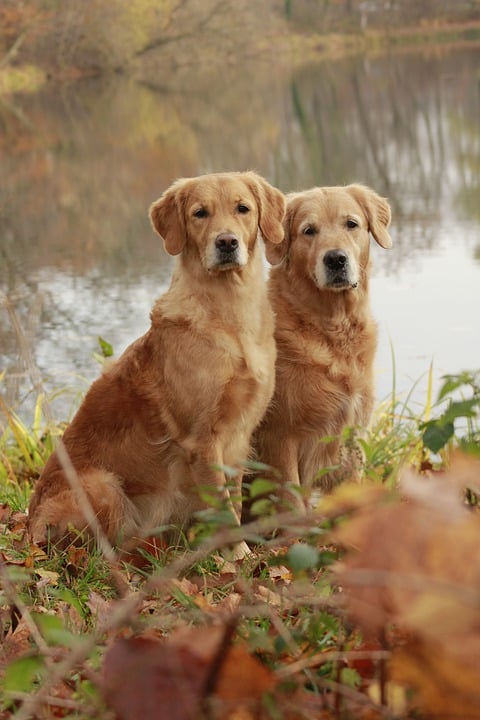Header: How to Stop Dogs from Jumping on People: A Guide to Polite Greetings
Introduction
Dogs jumping on people can be a common and frustrating behavior issue for many pet owners. Not only can it be uncomfortable and potentially dangerous for the person being jumped on, but it can also be a sign of a lack of training and boundaries in the dog. In this article, we will explore the reasons why dogs jump on people, the importance of addressing this behavior, training techniques to curb jumping behavior, common mistakes to avoid, and frequently asked questions.
Why do dogs jump on people?
There are several reasons why dogs may jump on people:
1. Excitement and enthusiasm: Dogs are naturally energetic and may jump on people when they are excited or happy to see them.
2. Seeking attention and affection: Dogs may jump on people to get attention or physical affection, especially if they have learned that jumping results in positive reinforcement.
3. Lack of training and boundaries: If a dog has not been properly trained or does not understand boundaries, they may resort to jumping as a way to interact with people.
The Importance of Addressing Jumping Behavior
Addressing jumping behavior is essential for several reasons:
1. Safety concerns for both humans and dogs: Jumping can lead to accidents, especially when the dog is large or jumps with excessive force. It can cause injury to the person being jumped on and potentially strain or injure the dog.
2. Social etiquette and preventing discomfort: Not everyone enjoys being jumped on by a dog, and some people may have fear or allergies that make dog jumping particularly uncomfortable for them.
3. Building a well-behaved and disciplined dog: Teaching a dog to greet people politely sets the foundation for other desirable behaviors and helps establish a well-behaved and disciplined dog overall.
Training Techniques for Curbing Jumping Behavior
Here are some effective training techniques to help curb jumping behavior in dogs:
1. Consistent Reinforcement of Basic Commands:
– Sit: Teach your dog to sit and stay before greeting people. This establishes a foundation for polite behavior.
– Down: Train your dog to lie down as an alternative behavior to jumping. Reinforce this behavior consistently.
– Leave it: Redirect your dog’s attention away from jumping by teaching them the “leave it” command.
2. Desensitization and Counterconditioning:
– Controlled exposures to triggers: Gradually expose your dog to situations that typically trigger jumping behavior, such as having someone enter the house. Start with controlled, low-stress situations.
– Rewarding calm behavior: Reinforce and reward your dog for remaining calm in the presence of triggers.
– Gradually increasing difficulty levels: As your dog becomes more comfortable, gradually increase the difficulty level by introducing more challenging triggers.
3. Ignoring and Withdrawing Attention:
– Turning away and avoiding eye contact: When your dog jumps, turn away from them and avoid making eye contact. This sends a clear message that jumping will not result in attention.
– Crossing arms and turning sideways: Physically blocking your dog with your body language can discourage jumping behavior.
– Reinforcing calm behavior only: Only give attention and affection to your dog when they are calm and have four paws on the floor.
4. Teaching an Alternative Greeting Behavior:
– Teaching a “four-on-the-floor” command: Train your dog to greet people with all four paws on the floor. Consistently reinforce this behavior.
– Using positive reinforcement techniques: Reward your dog with treats, praise, and attention when they greet people calmly and without jumping.
Common Mistakes to Avoid
To effectively address jumping behavior, it’s important to avoid these common mistakes:
– Inconsistent training methods: Consistency is key in training. Make sure all family members and visitors follow the same rules and reinforcement techniques.
– Physical punishment or shouting: Physical punishment can lead to fear and anxiety in dogs, worsening the problem. Shouting may also reinforce the behavior.
– Encouraging jumping unintentionally: Avoid unintentionally rewarding jumping behavior by giving attention or physical affection when the dog jumps.
FAQs
1. Is it normal for dogs to jump on people?
While jumping is a natural behavior, it can be trained out in most cases. Seek professional guidance if the problem persists.
2. Is it possible to stop a dog from jumping on people when they’re excited?
Yes, consistent training and positive reinforcement techniques can help redirect their excitement into more appropriate behaviors.
3. What should I do if my dog jumps on guests when they arrive?
Train your dog to sit and stay before opening the door. Reward calm behavior and only allow guests inside when your dog is composed.
4. How long does it take to stop a dog from jumping on people?
The time required to address this behavior varies depending on the dog’s temperament, consistency in training, and previous reinforcement history. It may take several weeks to months.
5. Can I punish my dog for jumping on people?
Physical punishment is not recommended, as it can lead to fear and anxiety. Instead, focus on positive reinforcement and redirecting their behavior.
6. Will neutering or spaying my dog help reduce jumping behavior?
Neutering or spaying alone will not directly impact jumping behavior. However, it can help to reduce overall excitement levels and provide a calmer disposition, making training more effective.
Conclusion
By following consistent training techniques and avoiding common mistakes, you can teach your dog to greet people politely without jumping. Patience, positive reinforcement, and guidance from professional trainers can go a long way in achieving this goal. Remember, training should always prioritize your dog’s well-being and strengthen your bond with them.









